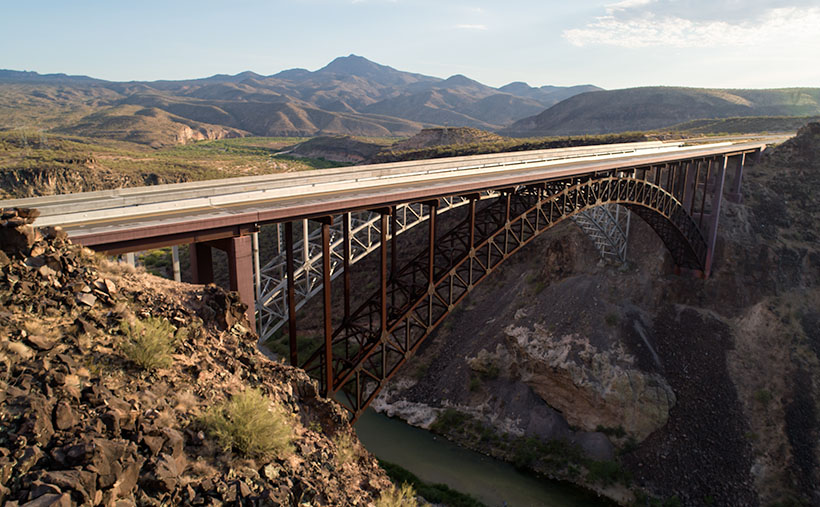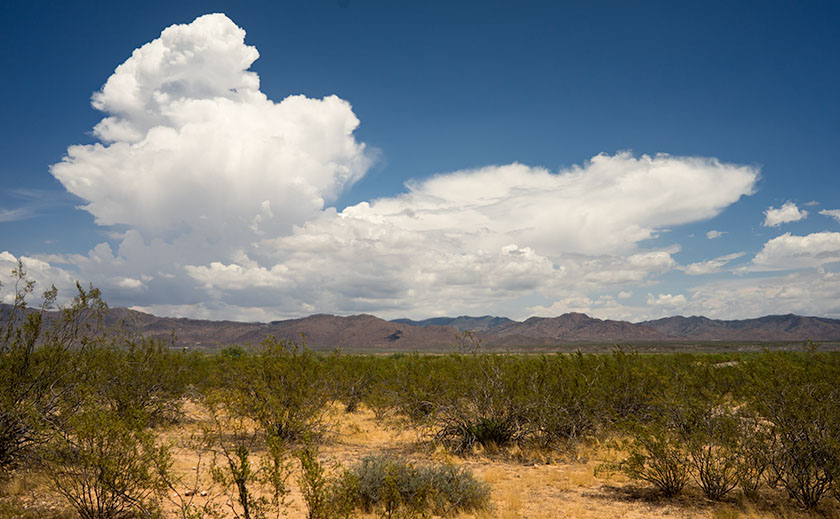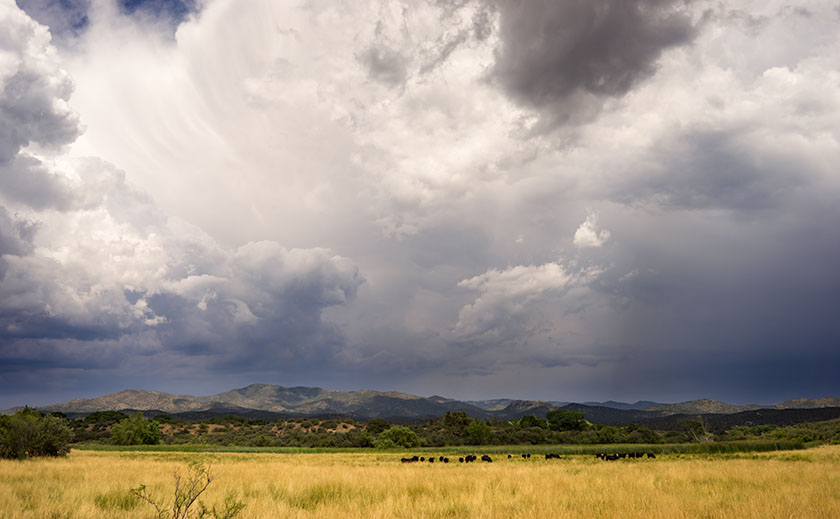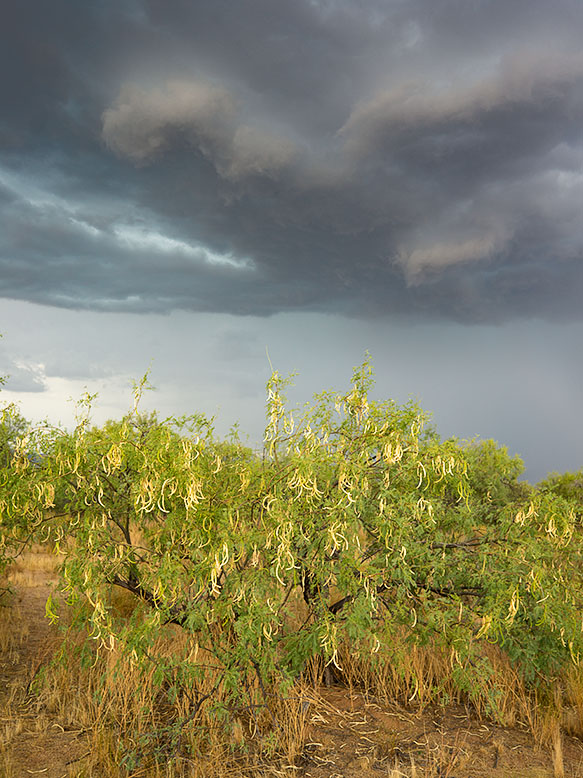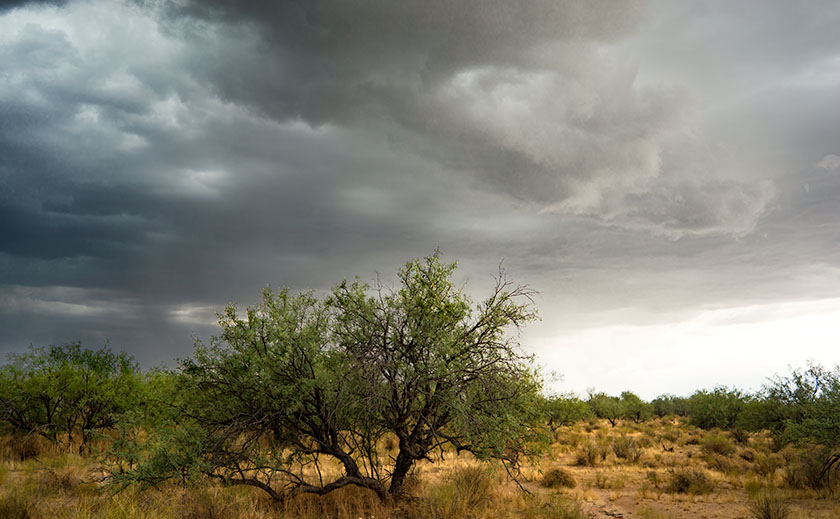Our Friday shows had ended, so we began closing up the house for the night. It wasn’t until Anne blew out the last candle that we noticed lights flashing outside—like a squad of cop cars at a drug bust across the street. Like all good citizens concerned for their safety, we did the cautious thing—we ran out on the front porch to see what was going on.
On the outside, the police cruisers weren’t there. Instead, a storm cell permeated the east. From the northern mountains to beyond our sight south, lightning filled the sky. Nearly all of the strikes were cloud to cloud and high in the atmosphere. The flashes happened so frequently, the sky never really got dark. We expected to hear more thunder, but the strikes overlapped, canceling out the familiar thunder sound. Instead, there was a constant low-frequency roar like a couple of airliners hovering above us.
As we watched the tempest in awe, we saw that it was headed toward us. Anne muttered, “I hope we get some rain out of this.” The moment those words fell from her mouth, the wind picked up. It was as if some invisible puppeteer was making our palo verde tree dance the Hully-Gully. It didn’t take long before the wind-swept rain chased us off of the front porch.
We retreated to the deck on the leeward side of the house, where we could see the splattering of large raindrops turn into a deluge. With the help of Nature’s strobe lights, we watched our red gravel parking area fill and turned into a red sea. All the while, the constant din of hovering 737s filled our ears, occasionally interrupted by the occasional plunking of hail ricocheting off the BBQ.
As we stood there, we saw the westbound lightning clear the patio roof. That meant that we were directly under the storm, and that’s when the rain subsided, much sooner than I expected. As the storm cell marched towards Aguila, the roar began to quiet, and we could hear distinct claps of thunder again. “I expect the power will go out at any moment,” I said to Anne, so when we went inside, I shut down the stereo and computers. As predicted, the power went out just as we climbed into bed—but only for a minute.
We haven’t experienced a monsoon storm with that kind of energy since we lived in Deer Valley—twenty years ago. According to those who track such things, we only got an inch of rain, less than half of that by other low-lying valley areas that experienced flooding. That’s more than double the rainfall than we got all of the last two summers.
The point is that we weren’t expecting rain Friday night, and that’s the way monsoon evenings go. The Weather Service doesn’t have the granular data to predict rain in specific neighborhoods. Like the clouds in this week’s picture, the storms brew all day over the mountains and come the evening, and they move off in unpredictable directions.
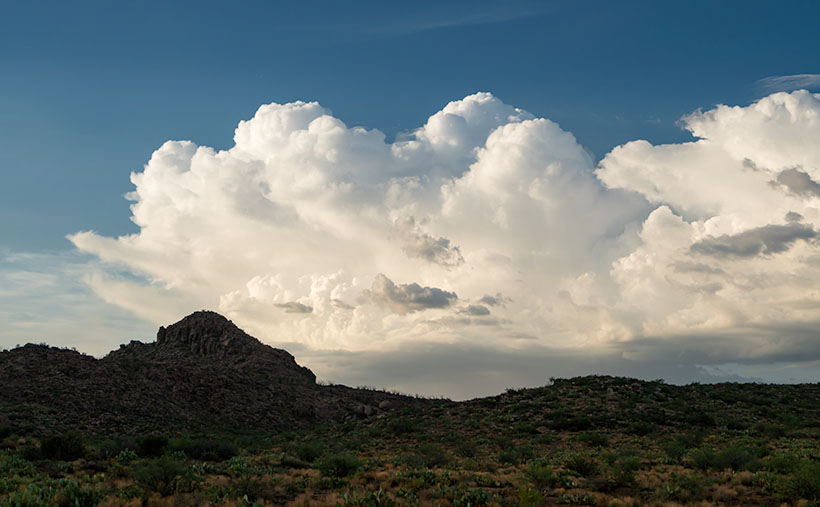
I shot the picture that I call McCloud Clouds outside Hillside—a small hamlet north of Congress. It has some nice thunderheads billowing over a range called the McCloud Mountains. I had never heard of them before, but I decided to have fun with them after looking them up. Can you blame me?
You can see a larger version of McCloud Clouds on its Web Page by clicking here. Be sure to come back next week to see what happens next.
Until next time — jw

